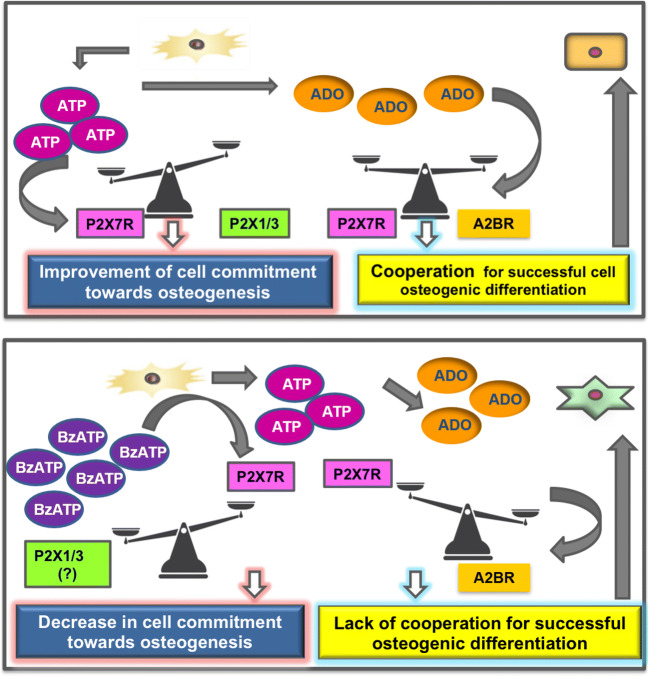Fig. 3.
Scheme for a possible cooperation between endogenos ATP and adenosine in modulating the osteogenic differentiation of ASCs. a Endogenous ATP, released from normal and even more from injured tissue, may interact with P2X7R; the expression of which is significantly increased during ASC osteogenic differentiation, thus supporting this process. The activity of adenosine, derived from ATP metabolism, is more evident in a second time, in which the nucleoside should interact with its receptors (likely of A2BR subtype [173, 174]). These data, if confirmed in MSCs from other human sources, would suggest a temporal cooperation between endogenous ATP and adenosine to assure the correct/complete differentiation of engaged MSCs into osteoblasts. b In contrast, BzATP, a non-selective P2X7R agonist, when administered along cell differentiation, inhibits ASC commitment toward ostogenesis. This inhibitory effect could be either due to its interaction with other P2XR (i.e., P2X1R and P2X3R, mainly expressed in ASCs during the first phase of their osteogenic differentiation) or to a decreased P2X7R expression [179]. In this consition, endogenous adenosine is no longer able to increase the ASCs osteogenic differentiation

